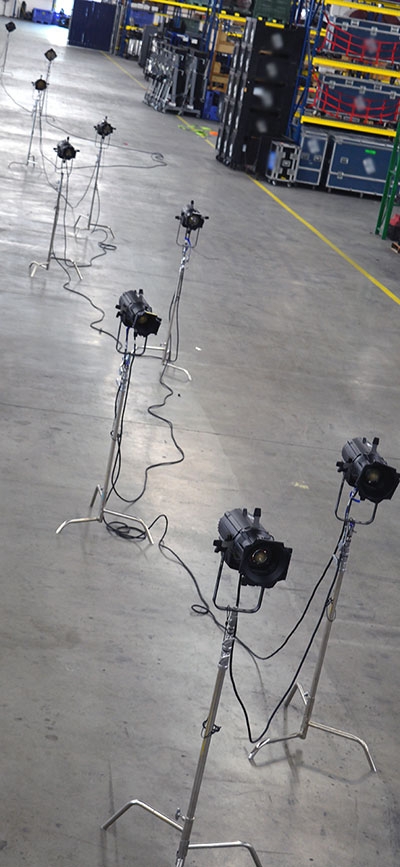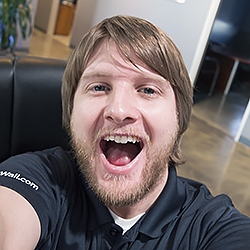9 Degrees of Separation

 degree lens tubes. In this setup the beams of the fixtures would be about the same size against the wall. |
This week we are joined in the Lounge by Clint Zaayer! Just a few words on Clint. Many of the pictures and videos that we use on this site come from Clint. We will usually have an idea of what we would like, send that idea to Clint, and he makes it happen. To give you an idea of his personality, when I asked him for a picture and bio, he sent me two pictures, a "professional" one and, as he put it, "more of a natural habitat Clint". You be the judge of which picture we went with below. Now for Clint!
Which lens tube do I choose? This is one of the most asked questions from first time users of a Source Four Ellipsoidal. The possibilities are endless with, 5 degrees to 90 degrees; each lens has its own use and situation that calls for it. There are many tricks to deciding which one to use though. Many seasoned pros can look at an area and just know which lens will work for the situation, but for people who are new to using the fixture, there
are a few indispensable tricks out there.
Knowing the Options:
For a fixed ellipsoidal, users have 9 barrels in their arsenal, ranging from 5 to 90 degrees. The popular 50, 36, 26, and 19 will cover most situations while 5, 10, 14, 70, and 90 are generally used for more specific situations. The 50-19 degree
lens tubes come in standard and enhanced definition (EDLT), while the remaining lenses do not. The EDLT is for using high resolution images with the fixture to produce a crisper image. These are the choices available when using a fixed lens tube Source Four.
Understanding the Lenses:
After learning all of the options, it is important to understand what differences they make. A basic rule is larger the degree, the closer you will want the fixture. For example, a 50 degree lens tube at 10’ away has a 6.5’ diameter. So a 5 degree lens tube will need to be 65’ away to get the same 6.5’ diameter. So the farther out you extend the fixture the smaller the lens
needs to be.
 |
A Rule of Thumb:
Stand at the distance the fixture will be placed. Put two hands together and use index fingers to range the area the light will need to touch. The angle the fingers make roughly corresponds to the size of the barrel needed. For example, if the two fingers roughly make a 70 degree angle then that is the lens tube that needs to be installed on the fixture. Although it is only an approximation, it is a relatively effective way to see which tube would be the best fit.
Being able to understand each lens can help make sure the Source 4 Ellipsoidal is being utilized at its best capacity. Picking the proper lens helps to make gobos and images crisp, clean, and properly sized. A basic understanding of the lens and how it works can also lead to a better understanding of the fixtures full capabilities.
 | Clint Zaayer is an Account Manager at 4Wall Los Angeles. While earning his degree |
